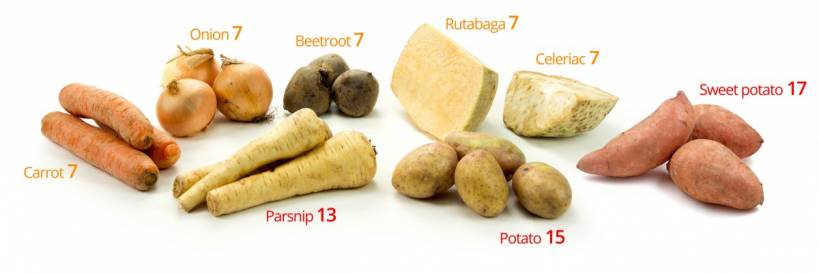Here is a list of low carb vegetables that you should include in you low carb diet.
Artichokes:
Top of the list for low carb vegetables is artichokes. Select firm, compact artichokes that have no brown blemishes. They should be fleshy with good green color and tightly closed leaf scales. Cut them 1 inch from the top and cut the stem close to the base. Remove the lower outer leaves that tend to be tough. Cut the thorny tip from each leaf with kitchen scissors. Your artichokes are now ready for a great new recipe experience.
Asparagus:
The greener the asparagus, the better. Stalks should be firm with compact tips, and they shouldn’t be woody or flat or have blemishes. When preparing asparagus, either break off the woody end of the stalk or cut it at an angle.
Avocados:
You want your avocados to be plump and slightly firm yet yield to gentle pressure. Most avocados are hard and not ripened when they’re picked. Ripen them at room temperature in a paper bag on the counter. Don’t pick bruised or shriveled avocados, because it’s an indication that they’re overripe.
Bell peppers:
Brightly colored with a shiny sheen means peppers are at their peak. Red, green, orange, and yellow varieties of peppers should be thick-fleshed and crisp. Avoid peppers that are wrinkled, shriveled, and dull. Red, yellow, and orange peppers are sweeter than green peppers.
Beets:
Meet beets, the first cousin to spinach (yes, really!). Look for young beets with fresh green tops. Not only can you cook the beet root, but you can also cook the tops, which are loaded with healthy nutrients.
Broccoli:
Pick broccoli with bright green stems and leaves and tightly closed dark green florets. Try to avoid stems that are too thick, florets that have begun to yellow, or leaves that are wilted.
Cabbage:
When we say cabbage, we are talking about a whole family here. In this cruciferous family, there are red heads and green heads, which should be solid and firm. Brussels sprouts are in the cabbage family too, and their small heads should be tight and solid.
Carrots:
You want carrots that are well-shaped and smooth with bright orange color. Do not select carrots that have cracks or are flabby and wilted. Small to medium carrots are more likely to be more tender and sweeter. Don’t be fooled by carrots that are packaged in orange cello bags, because they can be deceptive and look fresher and more orange than they actually are.
Cauliflower:
Avoid bruises or brown spots on cauliflower. Pick compact heads with white florets and green, crispy leaves. Store cauliflower in the fridge wrapped in plastic wrap and wash just before cooking.
Eggplant:
Try to select firm eggplants that are small rather than large because the smaller ones tend to be more tender. Check that the stems and the little cape-like bracts are intact and green. If the bracts are loose, the eggplant is likely older and may have begun to spoil, so pick another one.
Green beans:
Buy young, crisp, bright green beans that snap. To prepare, break off the ends and remove the strings if necessary.
Green onions (scallions):
Choose green onions/scallions with small bulb bottoms and fresh green tops. Avoid any with wilting leaves.
Leeks:
Try to choose leeks that are young, firm, and straight and have bright green leaves. If the root end is enlarged, they may be tough and not as sweet. Avoid leeks with yellow leaves.
Mushrooms:
Although mushrooms are technically in the fungi family, we include them in this chapter because, while you’re in the produce section buying veggies, you’ll buy mushrooms too, not even considering what family they belong to! Select mushrooms that are firm, plump, and unblemished. Check out different mushrooms — from button to shiitake, cremini to brown — for a different look, texture and taste. Don’t wash before refrigerating because they’ll keep longer that way.
Onions:
Carefully select onions that are clean with dry and papery skins. Make sure they feel firm and solid with no soft spots. Avoid onions that are beginning to sprout.
Parsnips:
Look for smooth, firm, well-shaped parsnips. Stay away from parsnips that are shriveled and soft or too large. Parsnips have good nutritive value and are very tasty.
Spinach:
Look for crisp and very dark green leaves — the greener the better. Purchased in its natural state, spinach is usually very sandy and needs a lot of preparation in cleaning and removing the sand. You may opt pre-washed spinach.
Turnips:
Shop for crisp, solid turnips. The turnip actually contains 92 percent water and no starch or sugar, but it has a pungent essential oil. Turnips are very nutritious and can be very tasty when prepared using a good recipe.
Water chestnuts:
These little wonders, usually bought in a can, aren’t vegetables but are actually fruits of a water plant. We won’t hold this against them, though. They add such wonderful crunch to veggie dishes that we can invite them into the family in this chapter. Be sure to rinse canned water chestnuts in cold water before using because doing so makes them crisper and removes any of the tinny flavor resulting from being canned.
Zucchini:
Buy small and medium, dark green zucchini. When you pick them up, they should be heavy for their size and free from blemishes, with thin, tender skin. Zucchini is a member of the summer squash family that also includes yellow squash.
Finally managed to get rid of the excess pounds and reached your weight loss goals? Now how to keep them off! We recommend keeping some type of regular fitness-training program in your daily regime. After all, you really don’t want to put all those pounds back on now that you’ve shed them! Maybe you’d like to add some muscle as well to round out your new physique. Speaking of great physiques, check out Lebron James and see how he did it! We’ve shared everything you need to know about (as we like to call them) Lebron James Supplements.





